What is the best way to cover the roof of the garage?
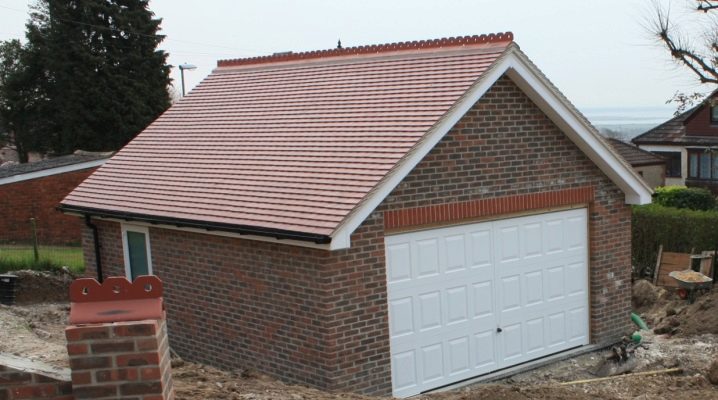
One of the important elements of any building is its roof, which is exposed to various physical and climatic influences. Its reliability and service life depends on the material chosen for its covering - the roof. The modern market offers many types of such finishing materials, which can be selected for certain climatic conditions and features of the structure on which they will be used.
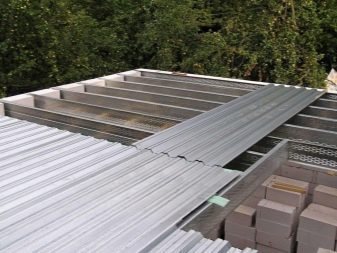
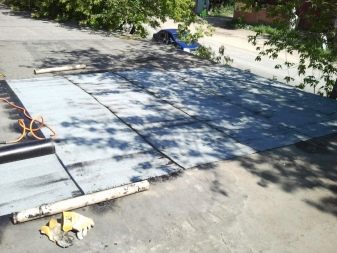
Peculiarities
The roof of a garage and its roof is practically no different from other standard structures of this type: they are used to protect the main building from moisture ingress. But those that are on the "homes" for vehicles are almost always simple. This is due to the fact that during the construction of such systems there is no need to create beautiful designs for the purpose of decoration. The materials used are usually the same products that are used in the construction of standard roofs for industrial or residential buildings. Very often, instead of the usual ones, insulated mansard roofs are made today, the rooms under which in the future can be turned into small dwellings. But such designs are relatively expensive and rare.
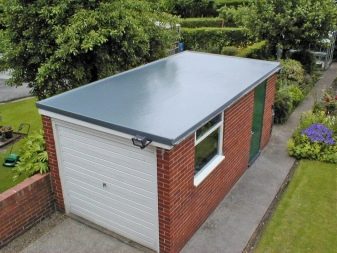
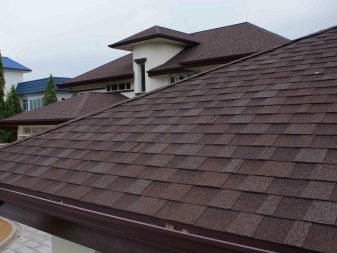
Materials (edit)
Arrangement of a roof in a garage involves the formation of a reliable protective layer that will prevent moisture penetration into the building. Therefore, for such purposes, in most cases, coatings of several layers are used.
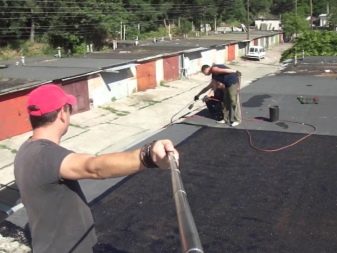
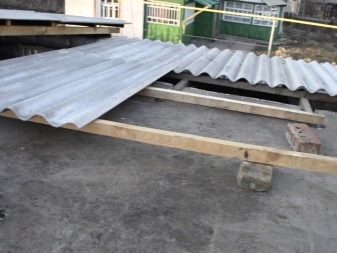
The following products can be used as the top covering of the roof:
- Ceramic tiles. The material can be classified as environmentally friendly and durable. Among the advantages should be highlighted anti-corrosion resistance, minimal destruction by microorganisms, as well as the ability to withstand significant temperature changes. The disadvantages include the high cost, as well as significant weight, forcing ceramic tiles to be laid only on strong frames, the slope of which does not exceed 12 degrees.
An alternative to this product today is metal tiles, which are lightweight and easy to install.
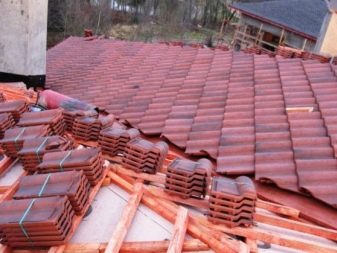
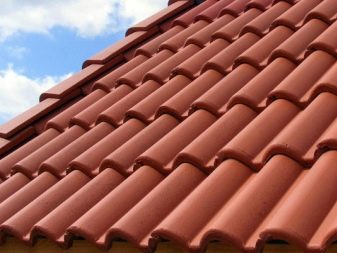
- Ondulin has proven itself well as a roofing material. The roof from it can serve for more than 20 years, and it itself practically does not collapse under the influence of external negative factors. Differs in relatively low weight and low cost. This combination allows you to form a roof not only cheaply, but also quickly. The only drawback can be considered the flammability of ondulin, but if you minimize the likelihood of its ignition under the influence of external factors, then it will become the best option when building a garage.

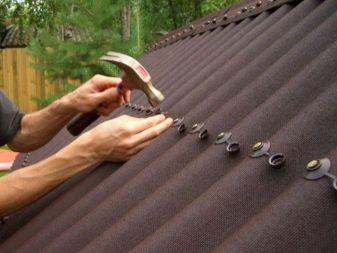
- Corrugated board appeared on the market for a long time, but only recently has it gained immense popularity. This material is a thin sheet of metal, which is given a certain shape, which increases its strength. To protect steel from rapid corrosion, the upper layers of the product are coated with galvanized and polymer compounds to prevent moisture from entering the metal itself. Products of this type are lightweight, easy to install and durable. There are many color options on the market. Such coatings are very durable, but if the upper protective layer is damaged, then the metal begins to rust very quickly.Therefore, it is advisable to use only high-quality products from well-known manufacturers for roofs.


- Slate are obtained from various shale rocks, which are pressed in special machines. This roofing material resists temperature extremes well, and is also not afraid of the effects of various chemicals. It does not support combustion. However, slate sheets are heavy. This, in turn, complicates installation. They are also very fragile, so it is advisable to work with them carefully and using a special tool.
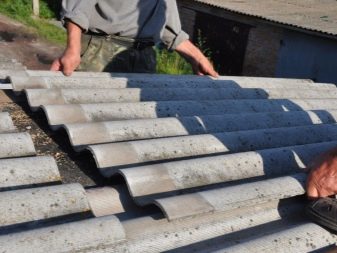
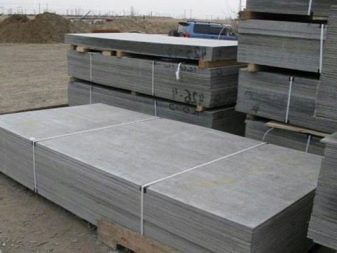
- Galvanized Steel Sheets outwardly, they are smooth canvases, which are attached to the base with special screws or nails. The disadvantage can be considered a high "noise" - the material makes loud sounds in strong wind and rain, as well as the likelihood of corrosion processes with constant exposure to moisture.
- Soft tiles. Outwardly, it resembles roofing material, but it has a more beautiful pattern. It is produced in the form of small parts of various sizes and shapes. The material is very durable, but requires a perfectly flat surface for installation, so you need to additionally nail sheets of moisture-resistant plywood or OSB to the rafters, and already lay such tiles on them.
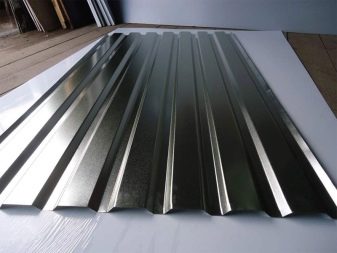
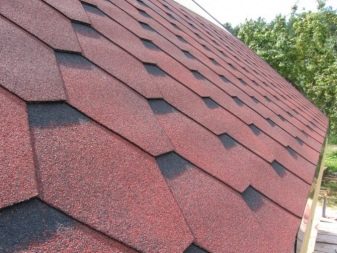
Waterproofing materials should also be considered.
This category includes such well-known coatings:
- Roofing material is produced in rolls, which cover the roofs in order to prevent their leakage. Note that it can be used as a backing or as a basic roofing material. It is used quite rarely on wooden bases, since the canvas does not have a design design, and is also highly flammable. At the same time, this versatile product is practically indispensable for flat roofs, where it is protected by concrete bases.
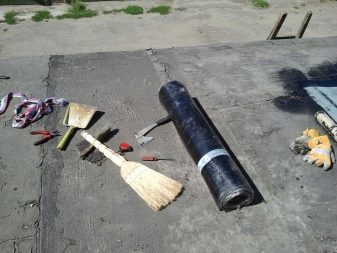
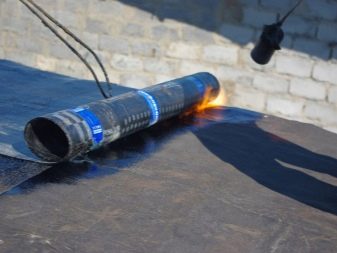
- Bikrost. This is another type of waterproofing agent. Use it as a substrate. It resembles roofing material in many properties.
- Bitumen or liquid rubber. Such materials are obtained from substances based on petroleum products, and are used to protect single-pitched concrete roofs. In hot melt, these formulations are simply applied to the substrate. This leads to the formation of a uniform layer that fills all the cracks and does not allow water to penetrate into them.
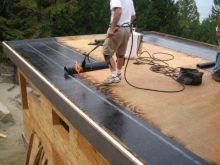
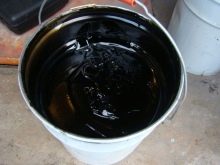
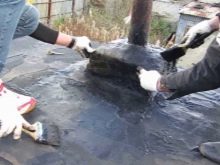
Types of structures
Today, when building garages, you can use one of several types of roofs:
- Flat. The angle of inclination of such a plane is minimal (up to 3-5 degrees) or completely absent. Such structures in most cases are monolithic concrete floors. They are found in large industrial garages, which are built of brick or other durable material. In everyday life, a flat roof can be made of wood, but it will not be able to hold a large weight of snow for a long time in winter.
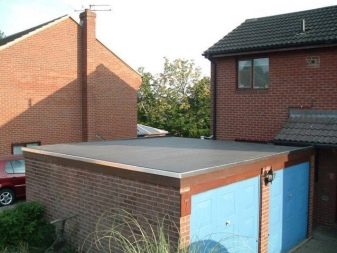
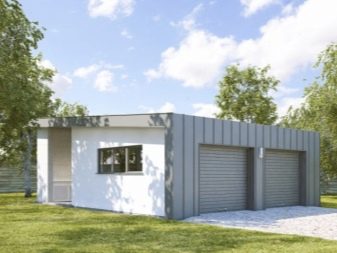
- Shed. A roof of this type is characterized by the presence of one plane, which is located at a slope relative to the frame. The device of this design is the simplest. You can even build it yourself without the appropriate skills. The tilt angle here often does not exceed 30 degrees. This is due to the fact that the width of the roof is significant and if the slope is increased, then the base simply cannot withstand the load.
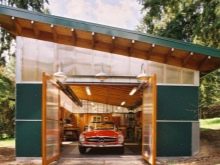


- Gable. Roofs of this kind are the most common and practical. The systems are simple and fast to build. The angle of such surfaces can be adjusted to 45 degrees. Note that the slope may be different on each side of the ramp. This approach allows you to give the structure the shape of an irregular triangle. The practicality of the system has been known for a long time. If you choose the right height, you can create a small attic under the roof for storing things. Mansard roofs are a variation of this design.They differ in the height of the room under the roof, which allows you to place a living room here. But this option for garages, as already mentioned, is not so common.
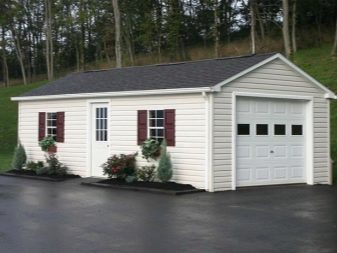

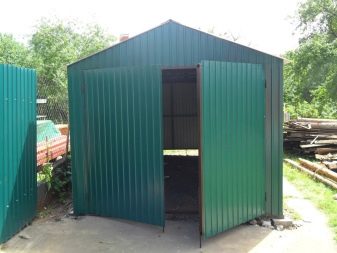
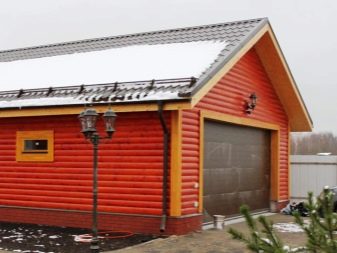
Ramp angle
Garage buildings today come in a variety of shapes and structures. It all depends only on the needs of a particular owner. But when building or renovating, it is important to choose the right roof slope.
The ability of the surface to withstand various loads depends on this parameter, as well as the possibility of covering with various materials.

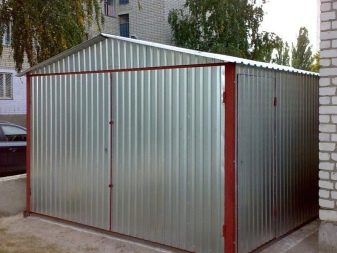
There is no one-size-fits-all garage roof pitch.
It all depends on the finishing materials with which it will overlap:
- Up to 20 degrees. Such roofs are usually pitched. For such surfaces, coatings such as asbestos-cement sheets, clay tiles, steel sheets are used.
- 20-30 degrees. This angle is ideal for most types of garage roofs. Such a slope allows not to linger on snow, and also to use for finishing almost all substances from soft tiles, slate to various roll coatings. Please note that previously this factor was usually not taken into account during construction, so the lifting of the structure does not always correspond to this value.
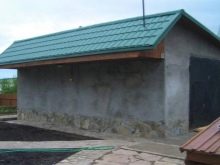
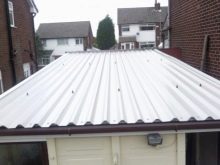
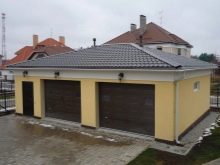
- 35 degrees or more. This angle is steep, which is not always good for roofing material. For such slopes, experts recommend using metal tiles that can withstand this load. It is not advisable to lay this material on roofs with a lower slope. Therefore, if you plan to use this finishing product, you will first have to raise the entire system if it does not meet the specifications.
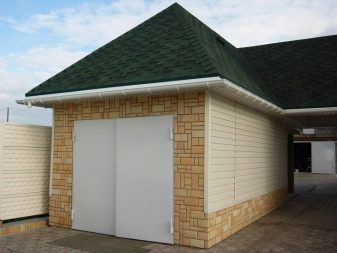
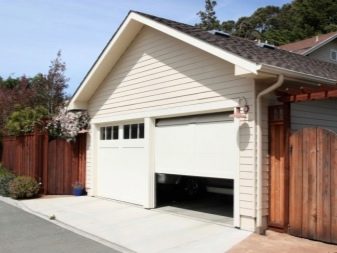
When choosing a corner and material for overlap, it is also important to consider a few more factors:
- The strength of the wind. It is important to determine the maximum wind load indicators and their direction. For this, special wind maps are used, on which the percentage of wind loads throughout the year is plotted.
- The amount of precipitation. Particular attention should be paid to snow, as it can accumulate and compact. If there is a lot of such precipitation, then it is better to use roofs with an angle of more than 20 degrees. When it is not possible to do this, the frame of the structure should be strengthened as much as possible so that it can withstand the forthcoming loads.
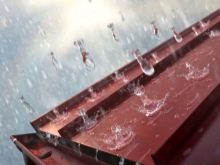
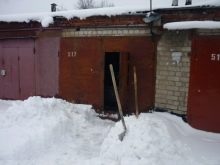

How to calculate the amount of materials?
Self-assembly of the roof very often involves the purchase of roofing materials. But before you go to the store, you should count the amount of this product.
The algorithm for calculating the volume of material can be reduced to the following sequential operations:
- Finding the angle of inclination. It is needed in order to calculate the surface area. This operation can be carried out using mathematical formulas. In order not to use trigonometry, the easiest way is to find the width of the ramp using the Pythagorean formula. Initially, the height of the ridge and the distance from the center point to the edge of the roof are measured. In theory, you will end up with a right-angled triangle. Having received the values of the legs, you can find out the length of the hypotenuse. For this, a simple formula is used, where a and b are legs.
Note that this approach can be used for both pitched and gable roofs.
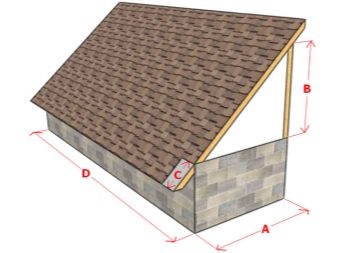
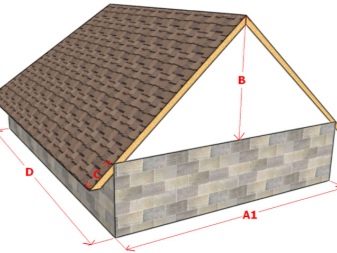
- Having learned the width of the slope, it is easy to get the total area of the entire roof. To do this, you need to measure the length of the garage along which the material will be laid. The area is calculated by multiplying the width and length by each other.
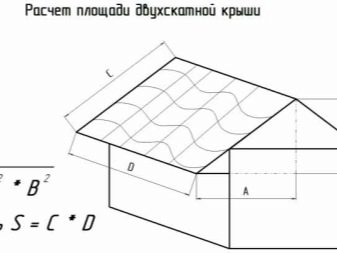
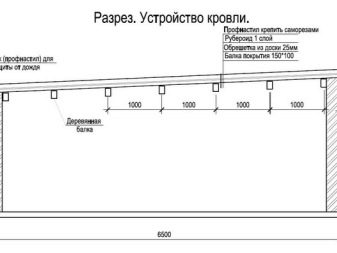
- At this stage, you need to find out the amount of finishing materials that are needed to cover a specific area. For gable roofs, calculations should be made separately for each half. The technology is quite simple and involves dividing the total area by the size of one roofing unit, taking into account a certain coefficient. For example, if one sheet of corrugated board has an area of 1.1 sq.m, then to cover 10 sq. m roof should be taken 10 whole sheets. It is important to take into account that during installation, some products are slightly stacked on top of each other. The number of sheets may also depend on the very width and length of the roof. Very often these numbers are not integers, so the material will have to be cut at the end. In some cases, it is possible to use product leftovers for this.
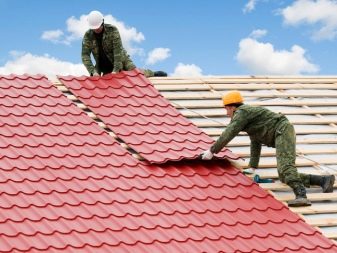
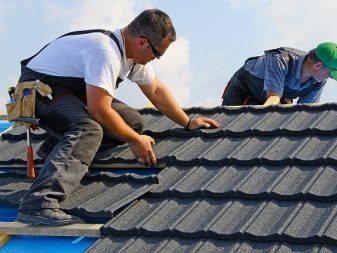
It is not always possible to accurately calculate the number of roofing products. Therefore, it is better to take a little more materials when calculating. But if you have a familiar roofer, then contact him, he will help you calculate this figure with a minimum amount of waste.
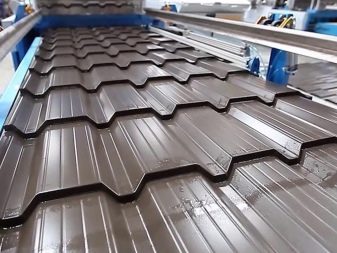
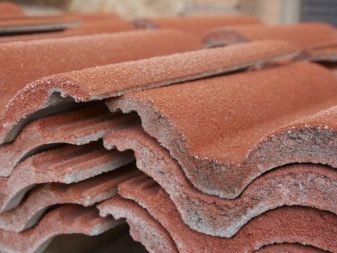
Waterproofing
Excess moisture inside any room can lead to the rapid destruction of all finishing materials. Therefore, when arranging roofs, including garage roofs, you should take care of high-quality waterproofing.
Today they solve this problem using several types of materials:
- Liquid formulations. This includes all products based on bitumen. They are sold in the form of liquid or solid elements, which must be brought to a liquid state before use. Mainly flat roofs with a slight slope are painted with bitumen. The composition is applied with a brush or a special spray. In this case, complete sealing of all cracks is carried out. Such products are used mainly for concrete roofs, but theoretically it can cover other substances as well. Please note that mixtures can be applied both outside and inside the building. Therefore, they can be used as aids.

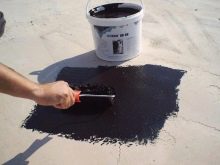
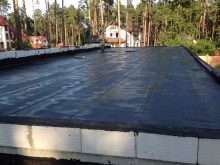
- Roll materials. Products of this kind are long sheets that cover the roof frame. They are located directly under the finishing material. Their classic representative is roofing material. But today, more and more often, special membrane sheets are used for such purposes. Attach them directly to wooden logs using a stapler and staples. It is important that adjacent sheets are stacked with a slight overlap. All joints are insulated using cold welding or special tape. Please note that all sheets of waterproofing must form a kind of drain. Therefore, the lower ends necessarily protrude beyond the edge of the lags.
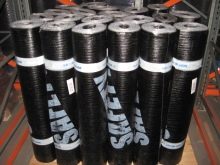
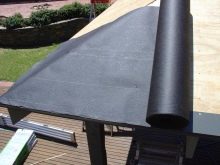
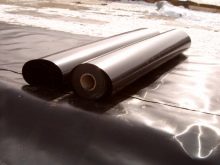
Waterproofing is an important step that must be carried out when arranging a roof.
The service life of the entire structure depends on how well it is performed.
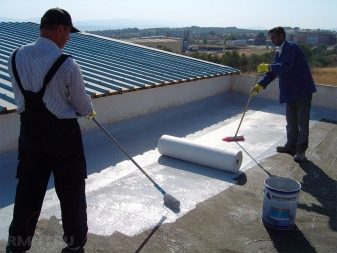
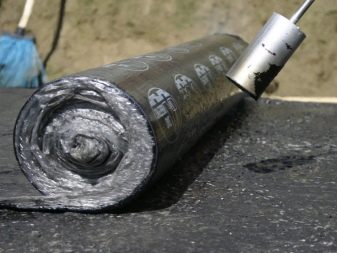
Subtleties of installation
Roof finishing technology depends on the structure itself and the selected material.
Let's start with the coverage of reinforced concrete floors, which consists of the following sequential actions:
- Concrete cleaning. The surface of the material should be free of dirt and large inclusions, as cleanliness will contribute to better adhesion of the materials.
- Application of liquid bitumen. Please note that some formulations need to be warmed up. Cover the surface with special brushes or sprayers.
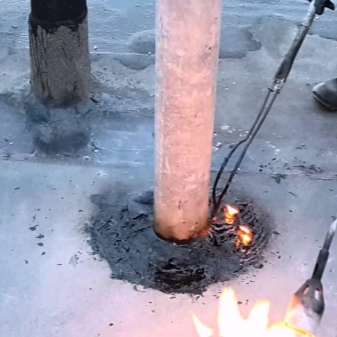
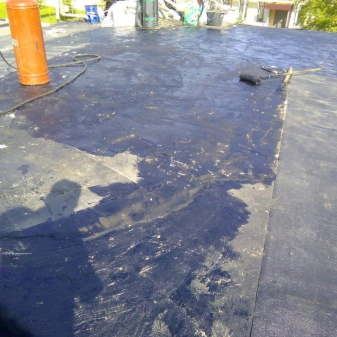
- Laying roofing material. It is laid immediately after the roof is coated with bitumen. This is important, since the composition quickly hardens and loses its viscosity. During installation, the roll is gradually spread and evenly pressed against the base. You can simplify this task using special rollers.
- Installation of subsequent layers. Their number is often equal to 2-3 pieces. The plotting algorithm is similar to the previously described principle. But when placing the following sheets, it is important to consider the location of the joints. It is desirable that the top layer of roofing material overlaps them. At the very end, the entire surface of the roof is carefully lubricated with bitumen mastic.
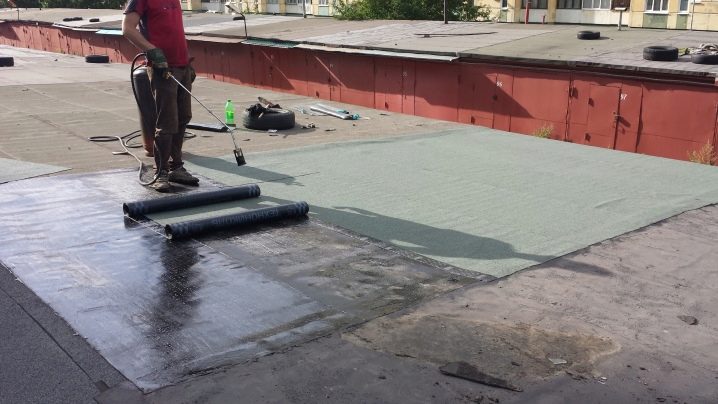
Now we will consider the principle of installation of structures located at an angle. These operations have many nuances.
The coating of these roofs has several actions in common:
- Arrangement of the lathing. Technically, it consists of several wooden planks that are located over the entire roof area. They are needed to create a base to which the finish will be attached. The step between the boards is selected individually. Some finishing materials require a completely solid base without gaps (soft tiles, etc.).
In this case, close the logs should be done with sheets of moisture-resistant OSB.
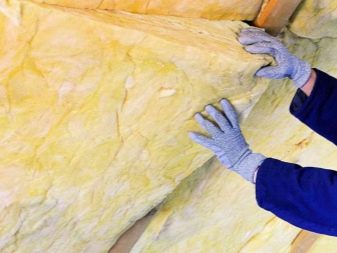
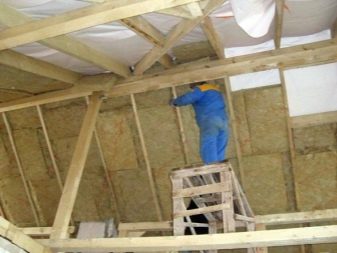
- Laying waterproofing. This step involves covering the lathing with a special film. Please note that some types of waterproofing are mounted directly on the logs, and then they already begin to cover it with a crate. It all depends on the selected finishing materials, as well as on the presence of roof insulation from the inside.
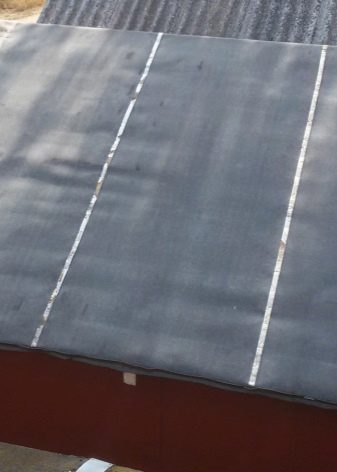
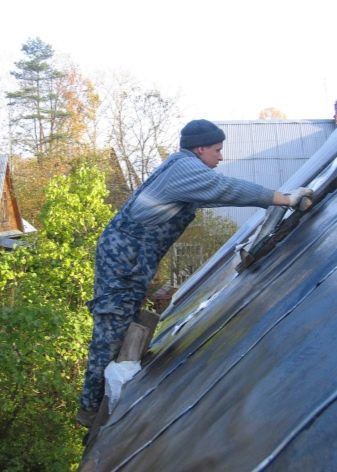
- Fastening trim. Installation of sheet materials such as corrugated sheet, slate or metal tiles starts from the bottom corner. But if soft tiles are used, then the installation is carried out directly from the ridge. Installation begins with the location and alignment of the first element. To do this, it is attached to the crate with special fasteners. Then a second sheet is laid next to it and both of these systems are already aligned. If the roof involves two rows, then the upper elements are mounted in a similar way. After complete alignment, all products are fixed. Fastening is carried out with special screws or nails, and sometimes with adhesives. Do not use products that are not intended for this, as they will quickly lead to cracks and leaks.


The installation of such systems should be done very carefully. It is advisable to lift the sheets together with several assistants, since they are quite heavy and can easily injure a person.
Try to carefully align all elements, since replacing them after fastening is a difficult operation.
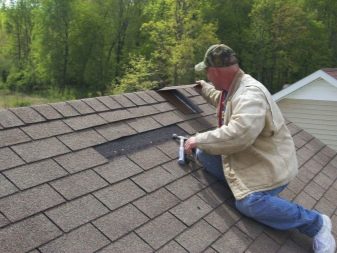

Tips & Tricks
The service life of a garage roof depends not only on the selected materials, but also on the quality of their installation. Very often, after installing such systems, the owners complain that the base is leaking.
To prevent such situations, you should adhere to several rules:
- If the concrete base of the roof has many cracks, it should be reinforced with concrete. The thickness of the screed should be kept to a minimum so as not to increase the load. After that, the new base is covered with roofing material.

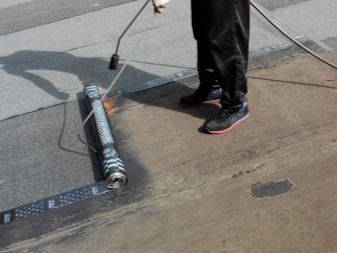
- When operating wooden structures, it is important to control the presence of deflections. If they appear, then this will eventually lead to the formation of a leak, as well as to the need to rebuild the entire surface. When you discover this phenomenon, it is advisable to immediately strengthen the frame.
- When choosing a roofing material, be sure to take into account its weight and the load that it will create on the frame in the future.
- When laying waterproofing (especially roofing material), you should start from the top and work your way down. But all layers must be overlapped in such a way that the water flows to the ground, and does not fall under the joint.
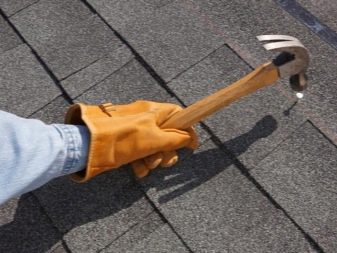
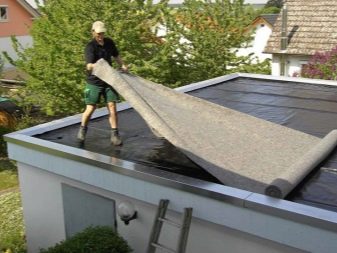
- If the roof of the garage is leaking, the problem should be identified at the initial stage. This allows in most cases to completely eliminate it without disturbing the state of other materials. When a technical mistake was made, it will be necessary to completely cover the entire roof. Therefore, it is advisable to check the quality of the installation, as well as the reliability of the joining of all elements. After all, it is in these places in most cases that a leak appears.
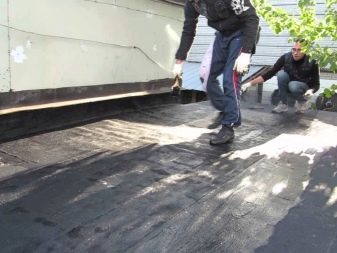
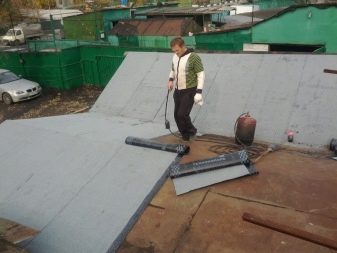
When choosing material for a garage roof, it is important to focus on the tasks that it must solve. If you need basic protection, use slate or roofing felt. The creation of a decorative coating requires careful selection, involving the use of ceramic or metal tiles.
For information on how to properly cover the garage roof yourself, see the next video.





























































The comment was sent successfully.